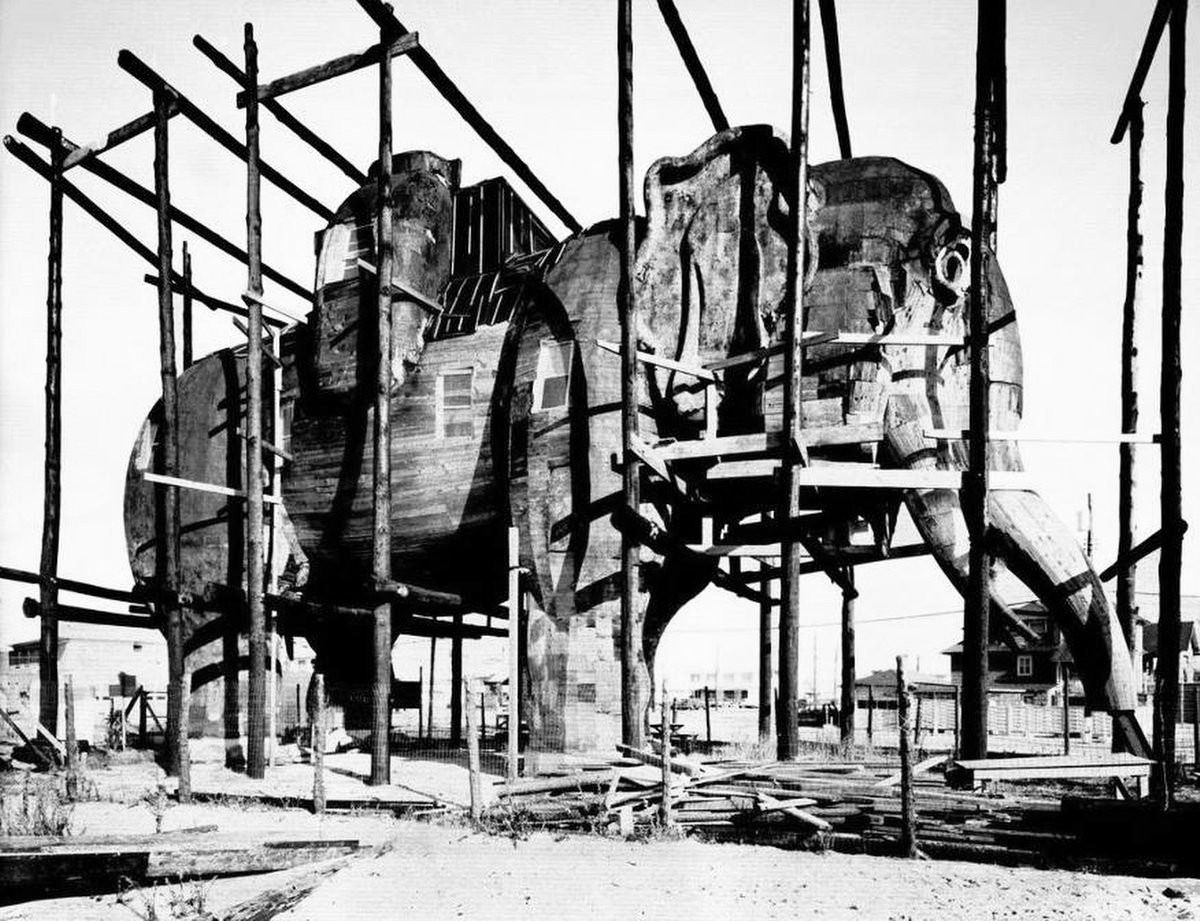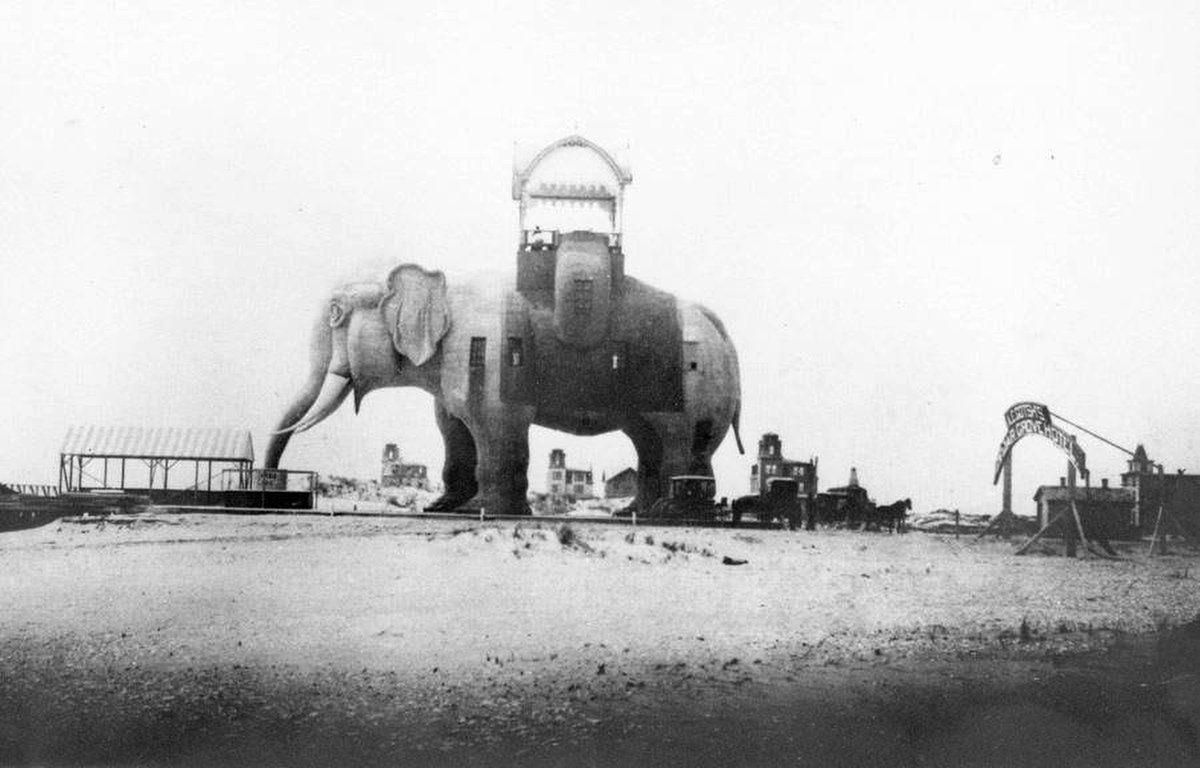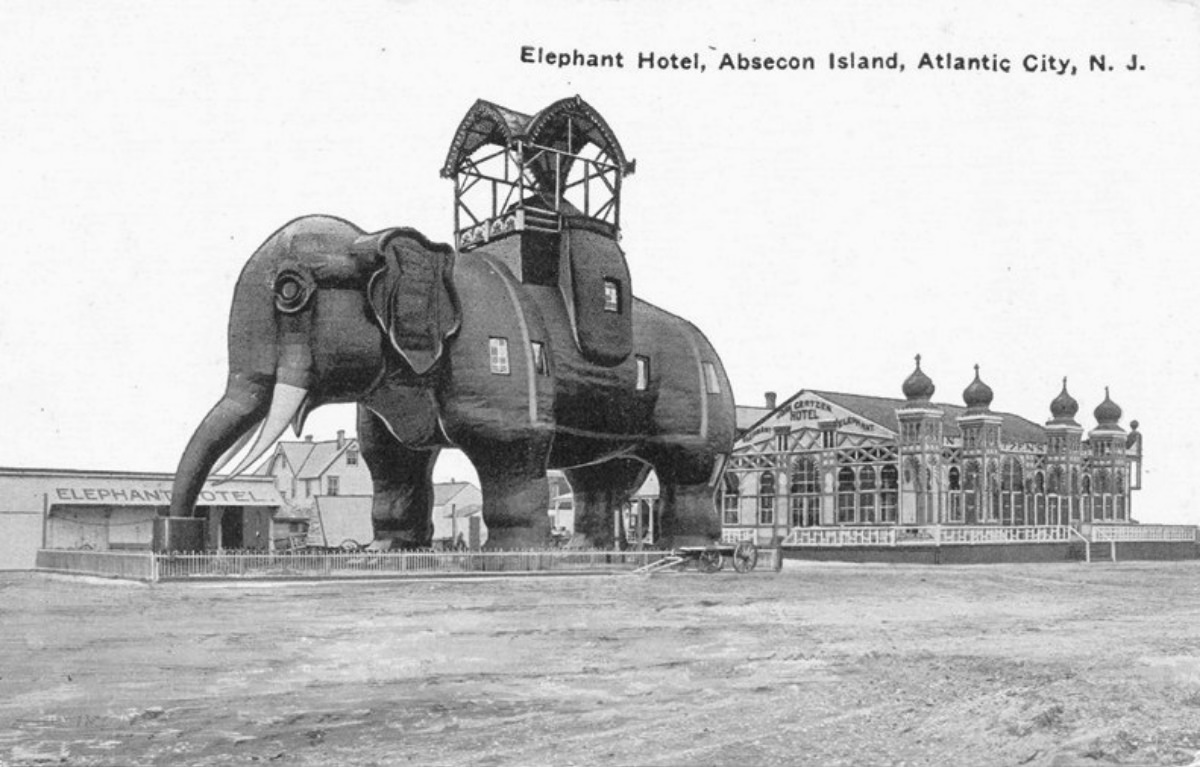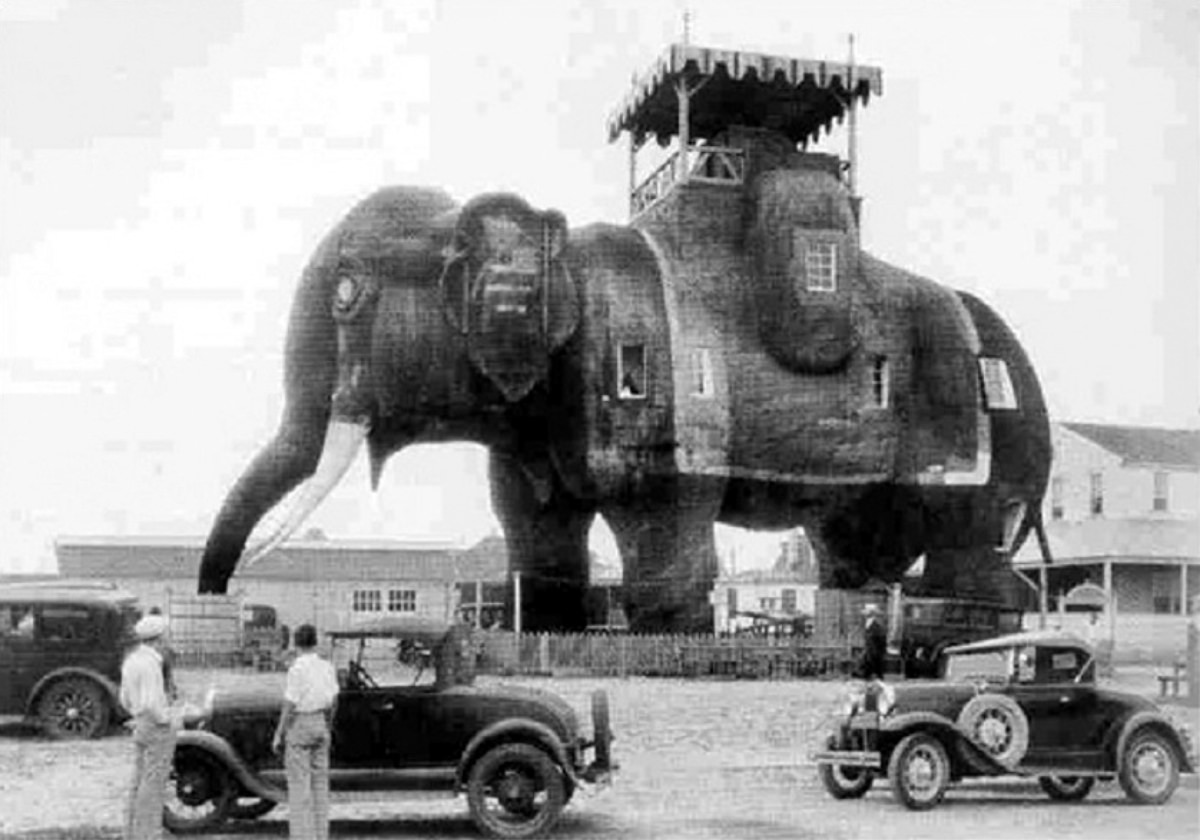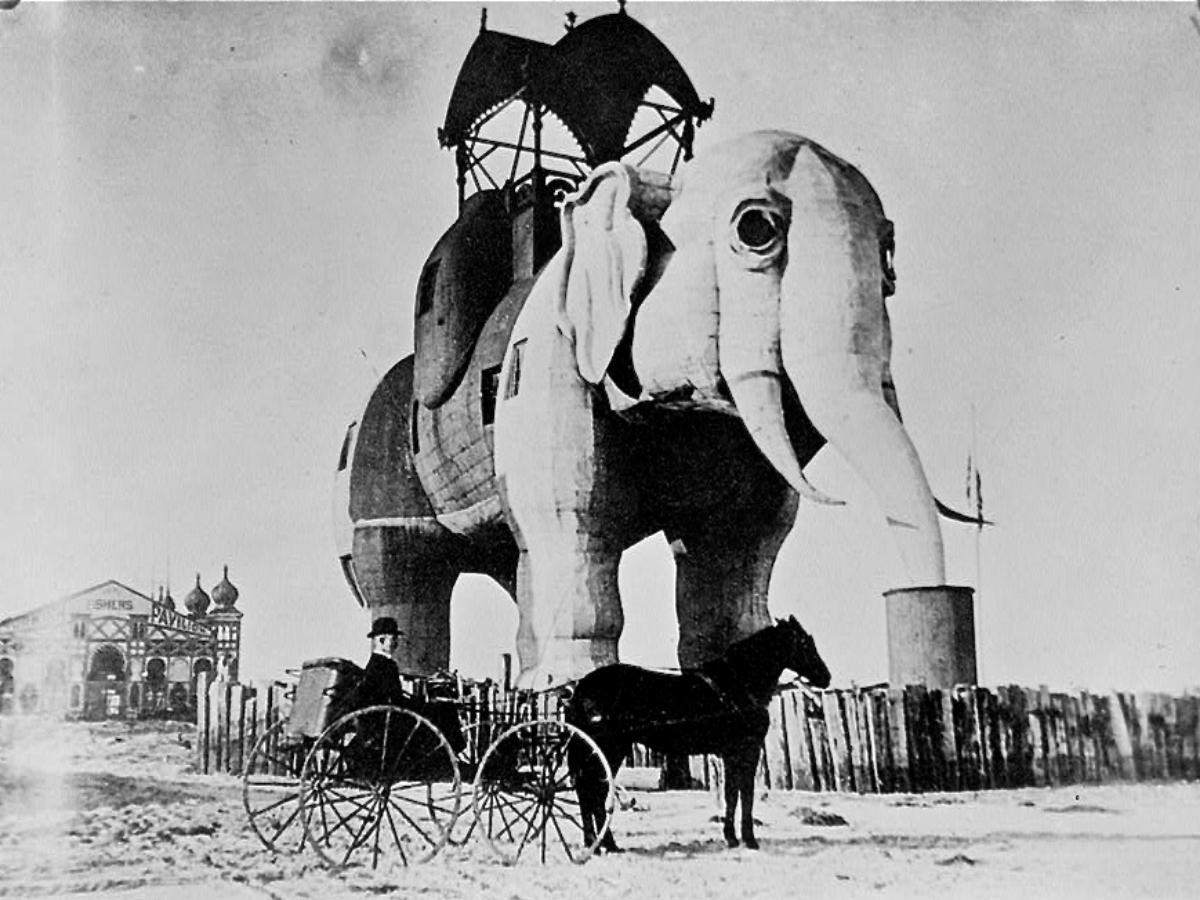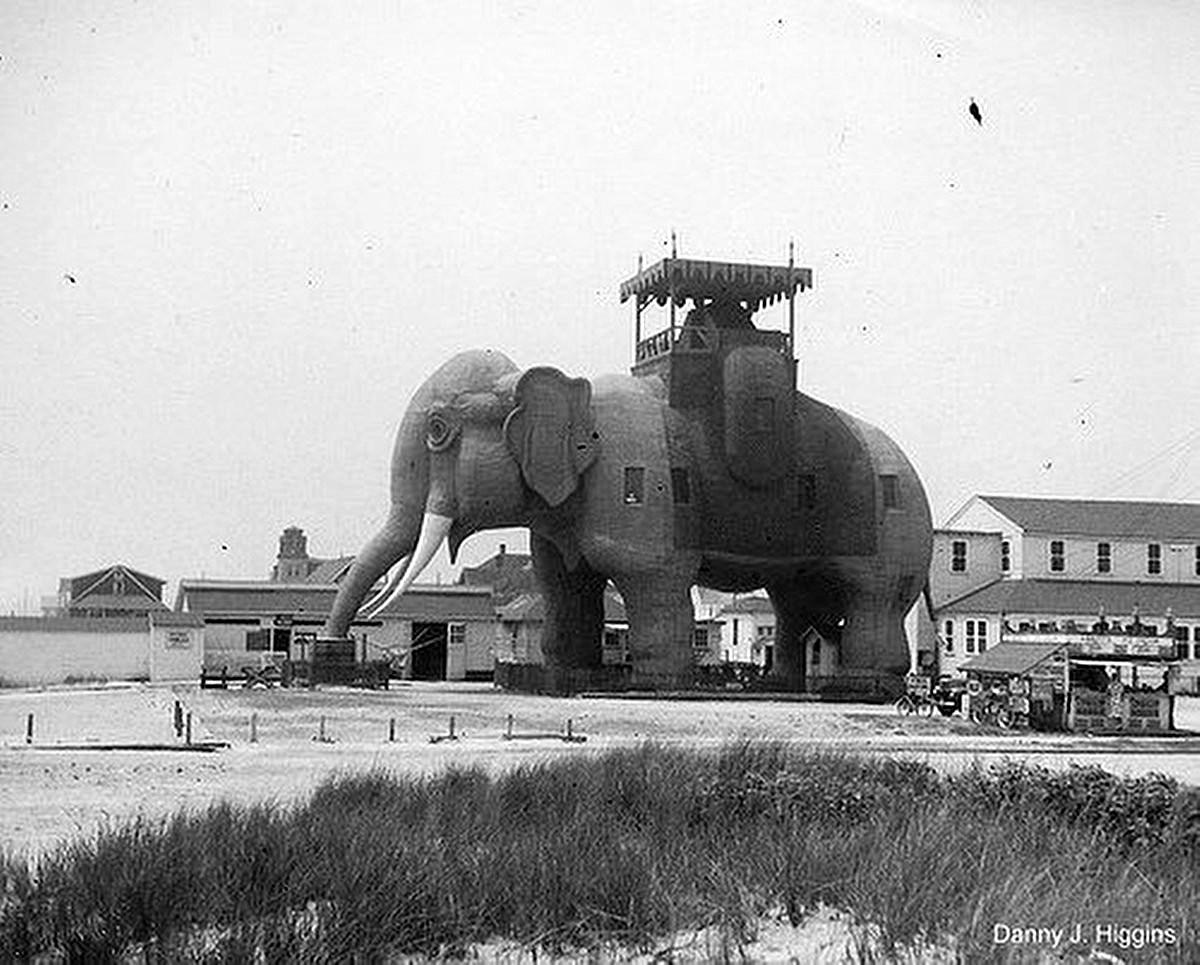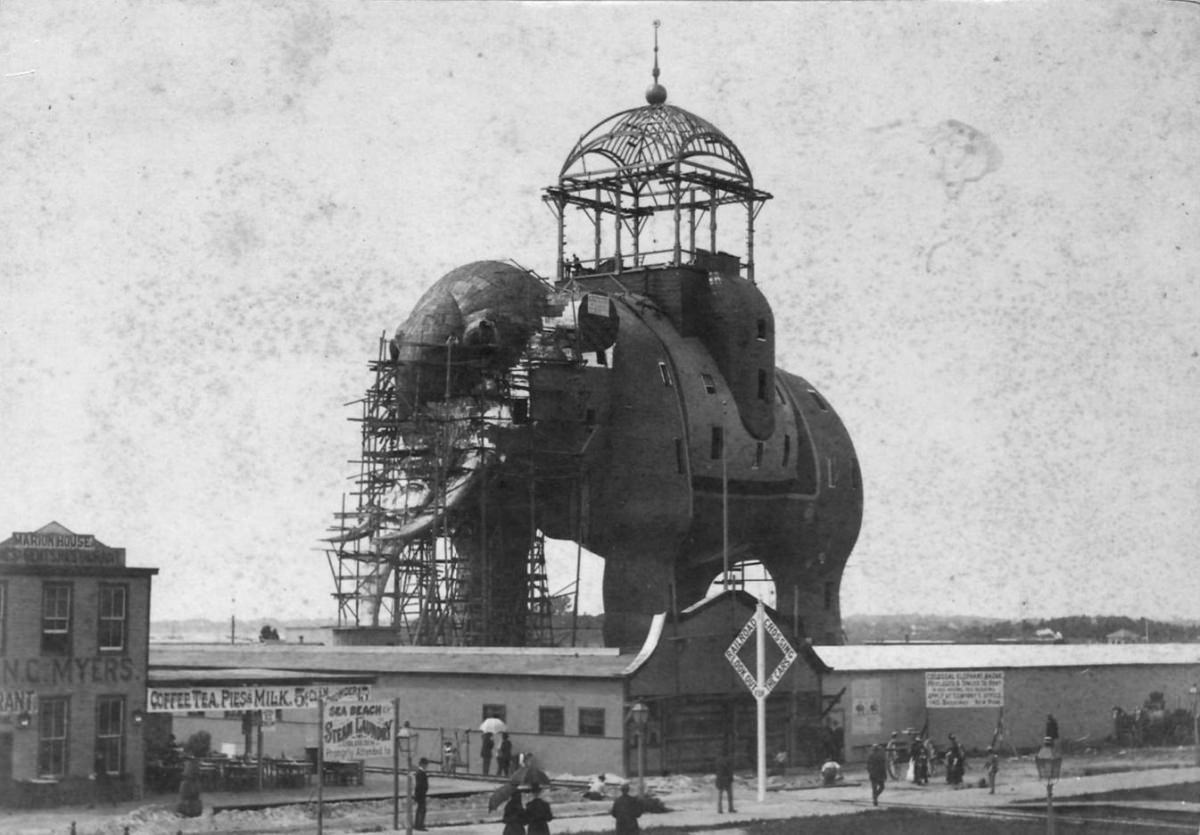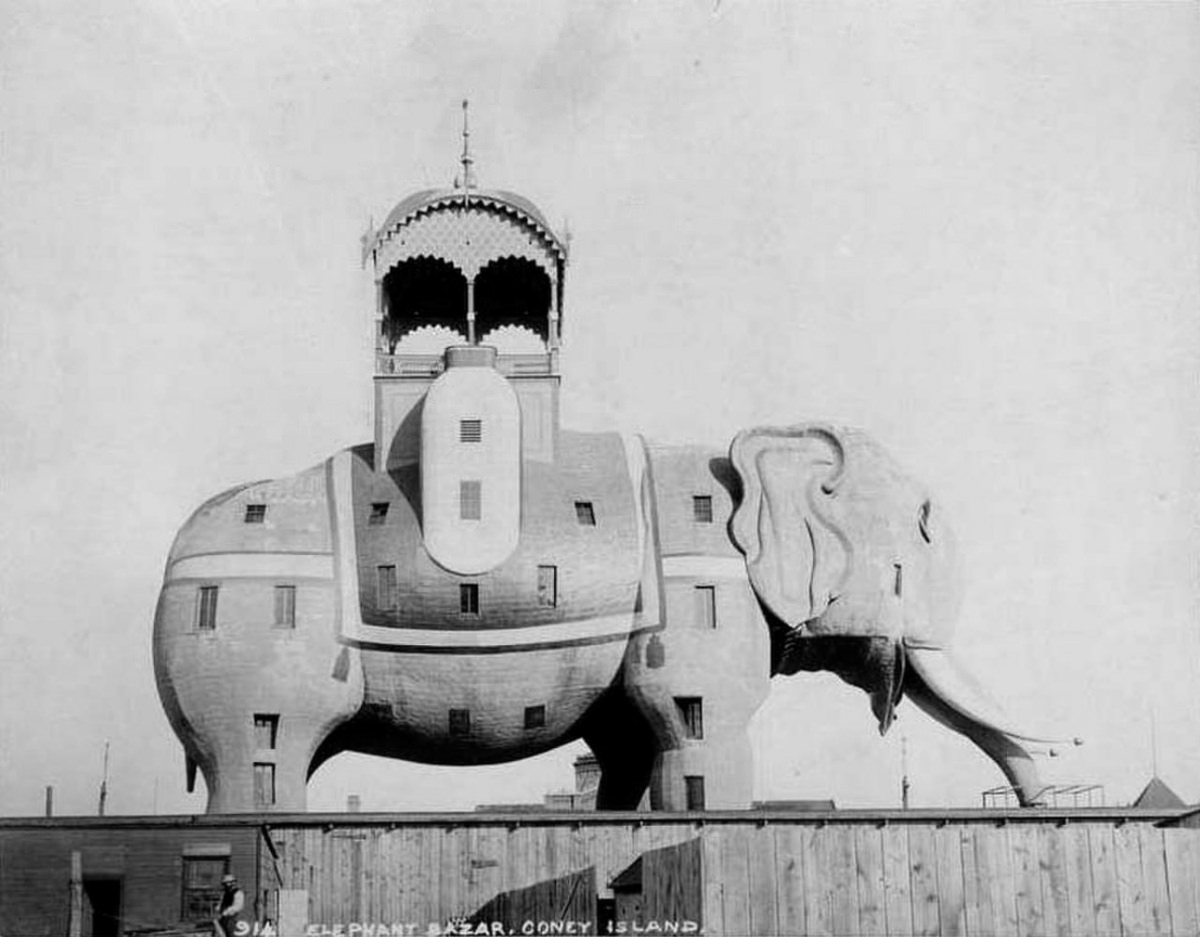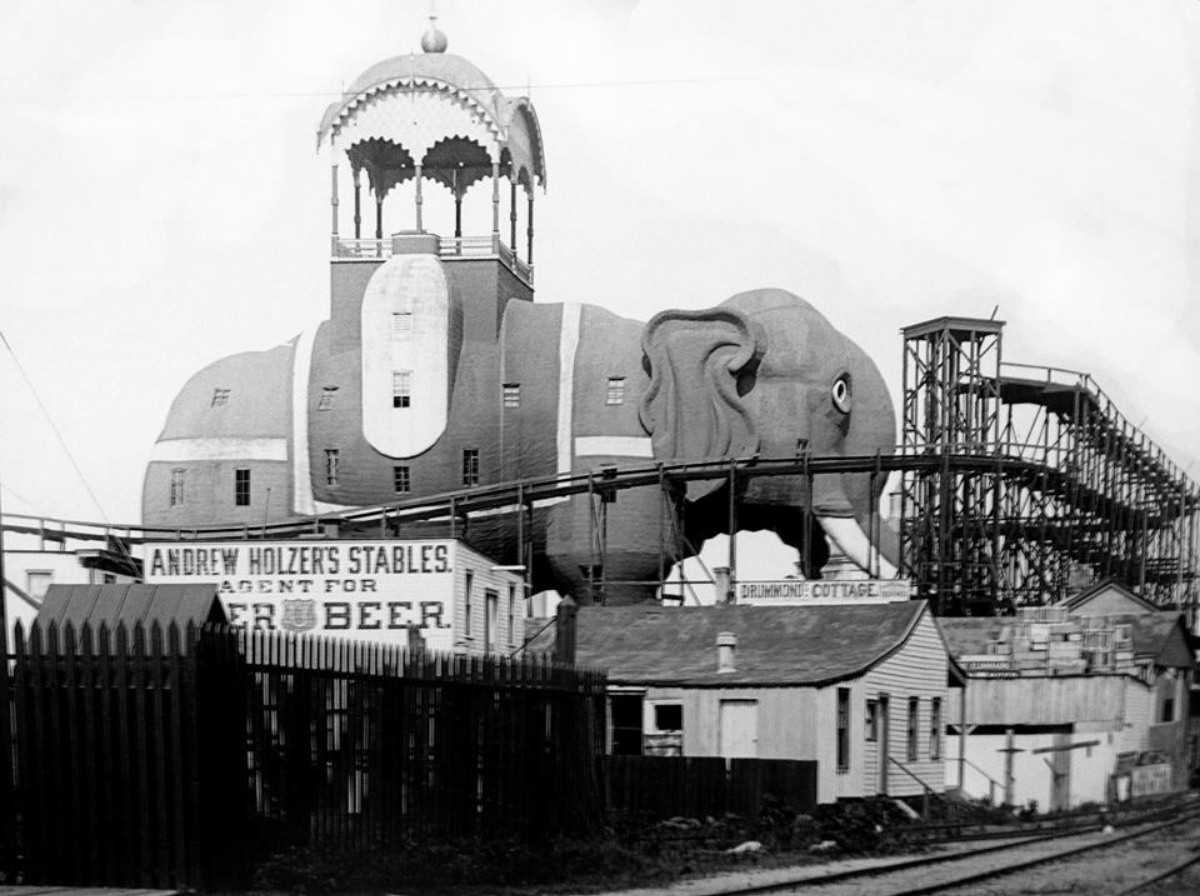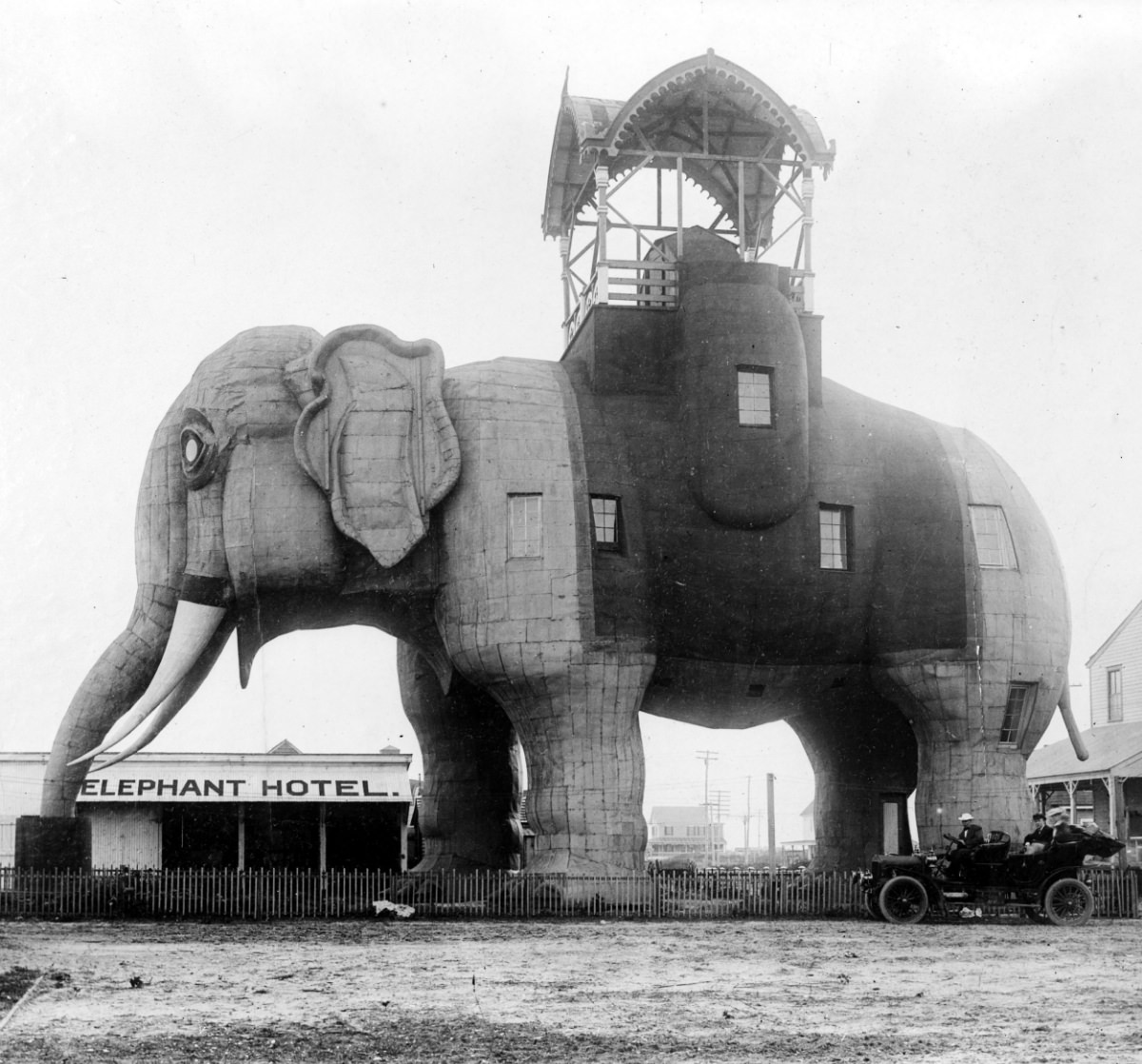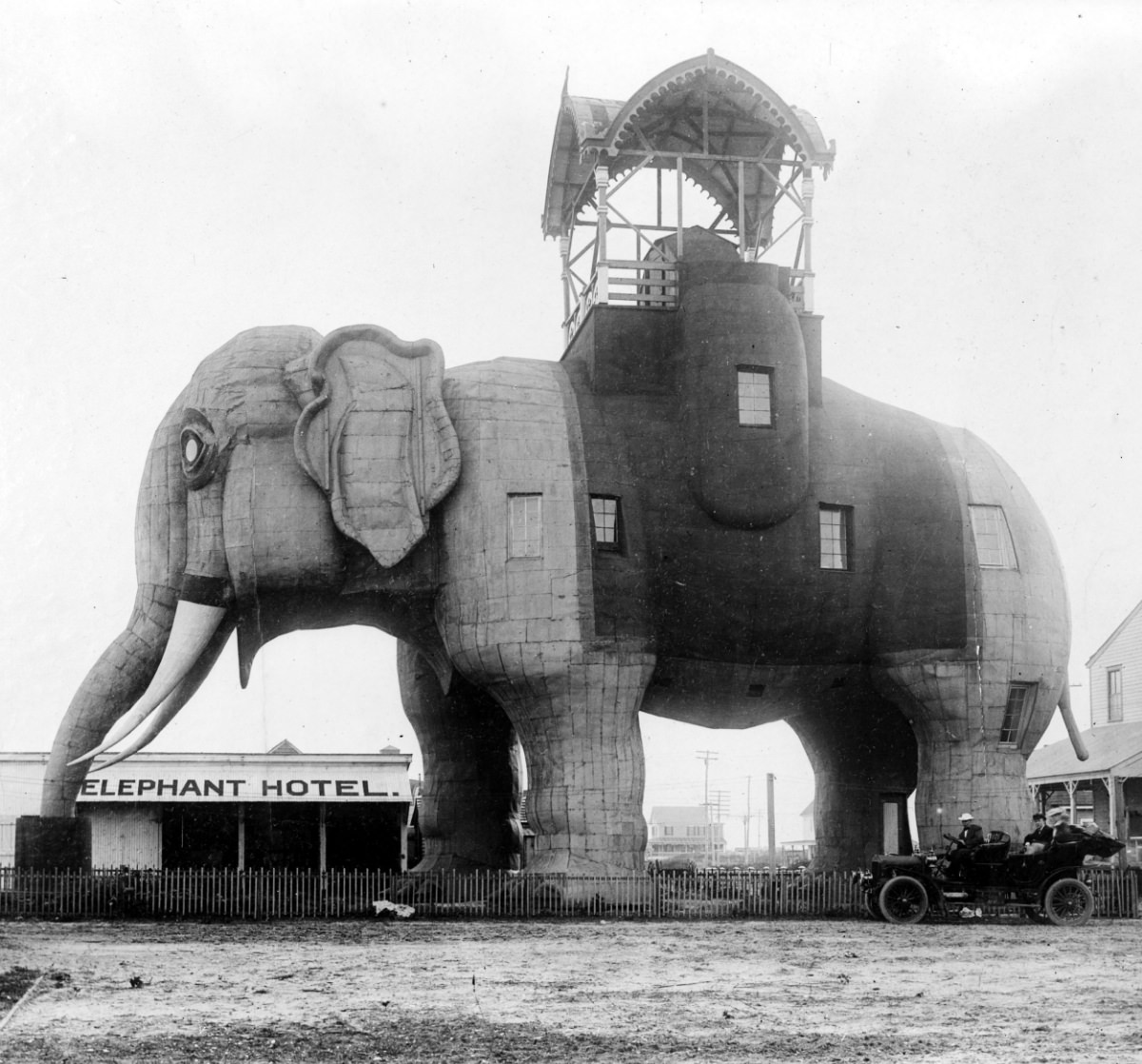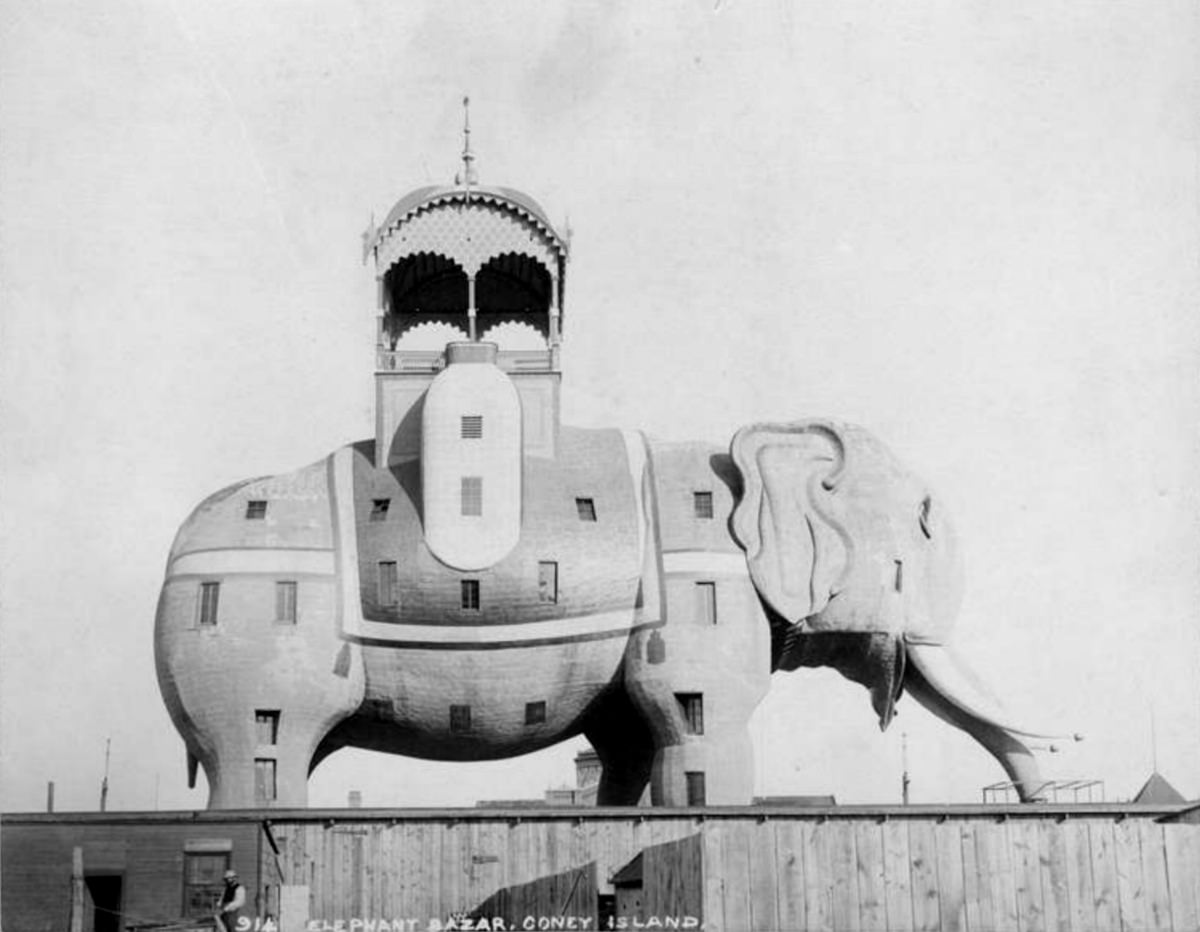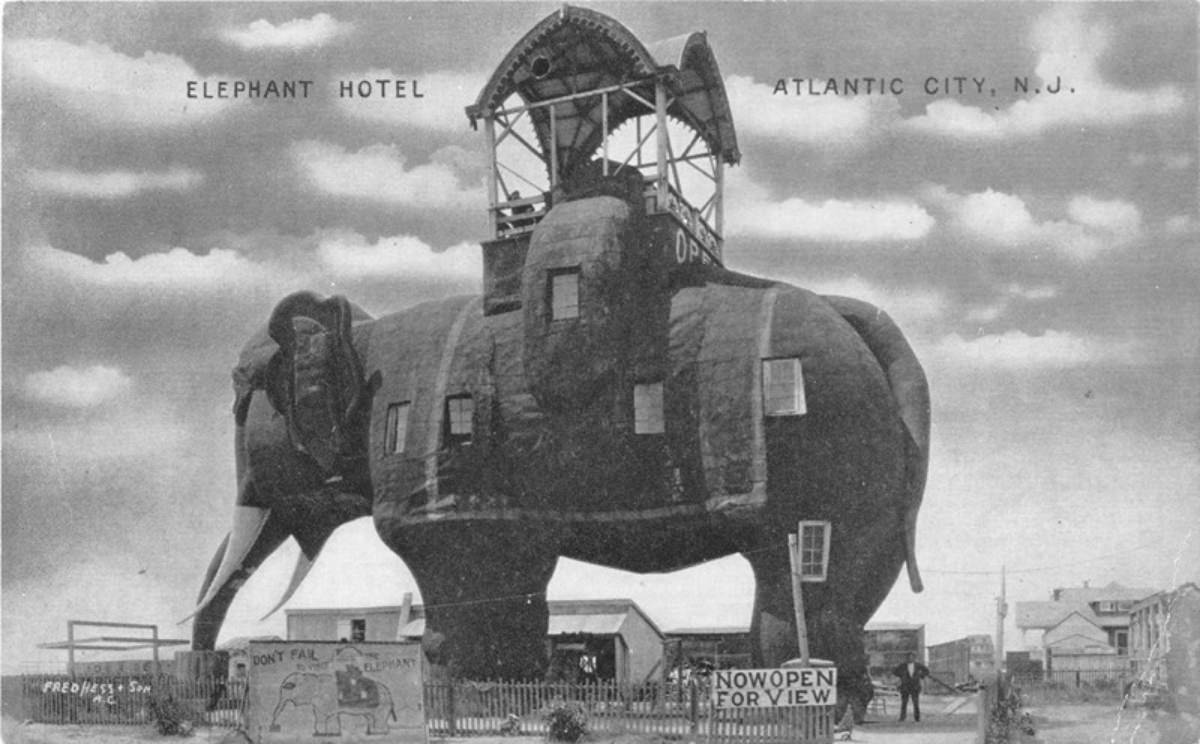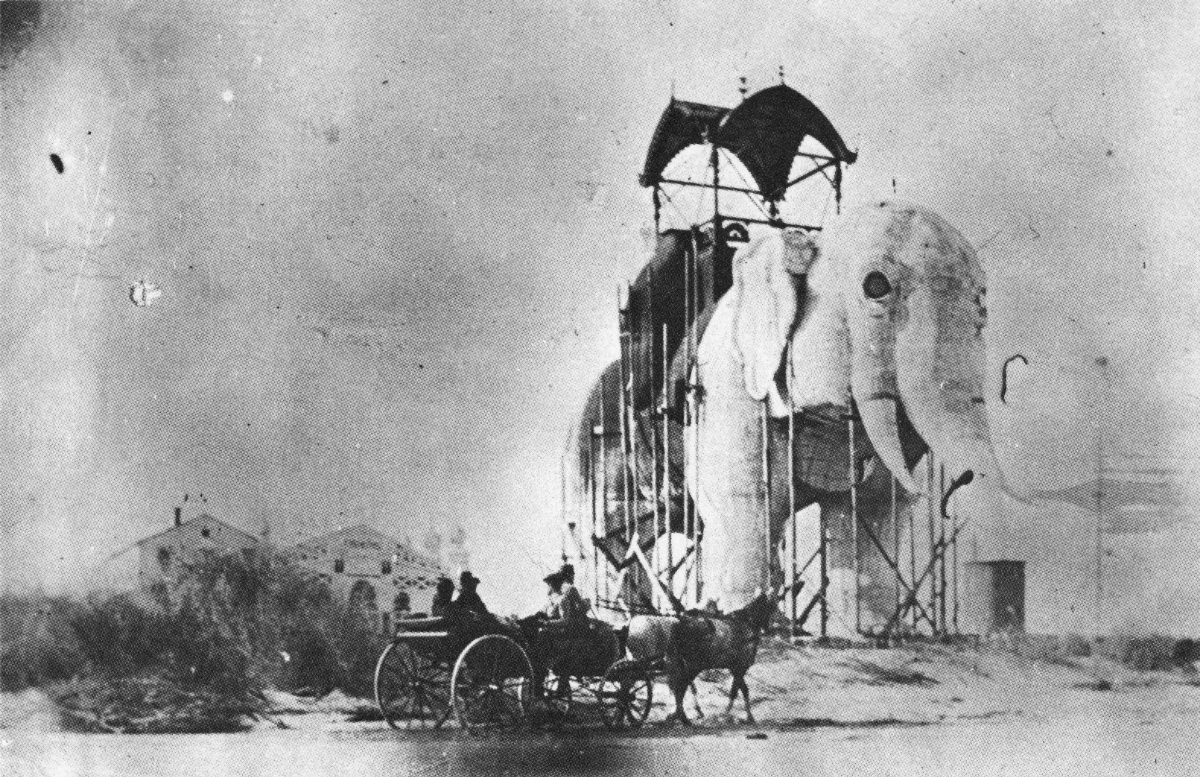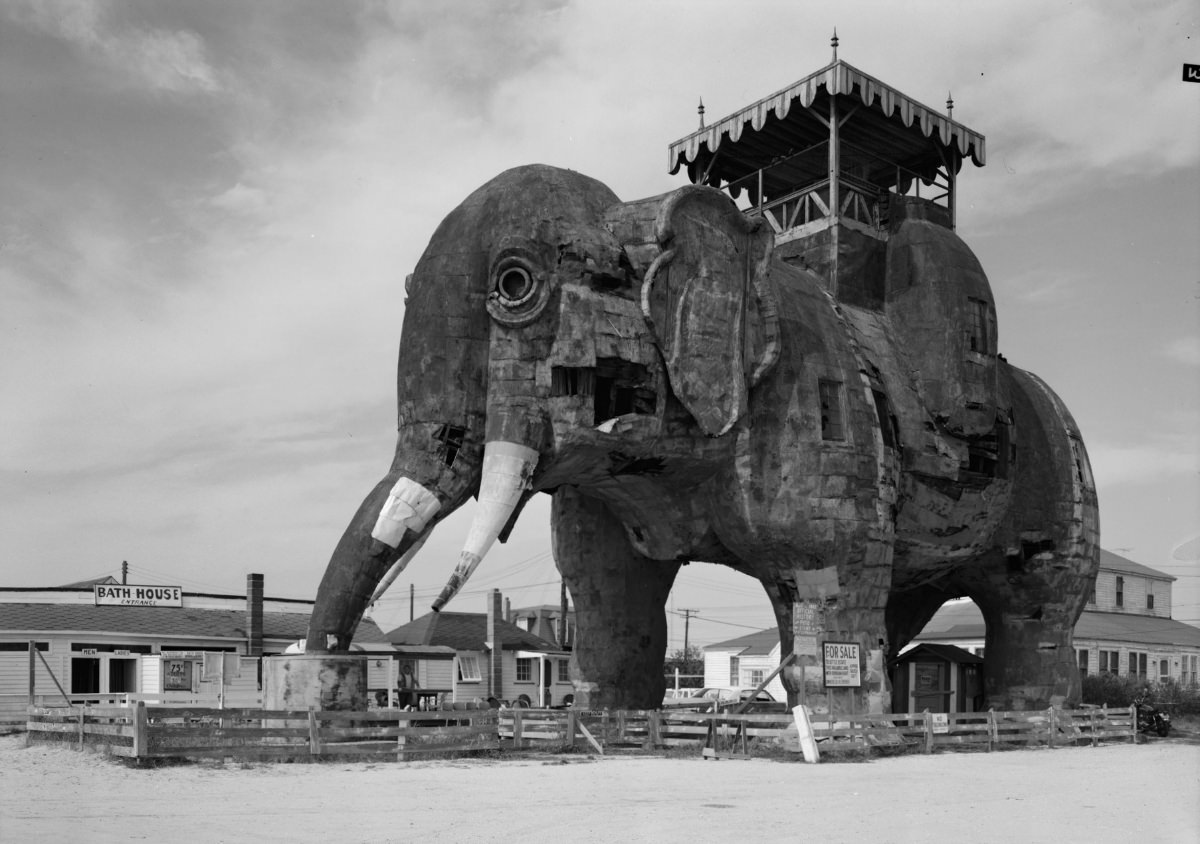In 1881, American inventor, James V. Lafferty constructed Lucy the Elephant, a six-story elephant-shaped building of wood and tin sheeting in Margate City, New Jersey, approximately 5 miles (8 kilometers) south of Atlantic City. Originally called Elephant Bazaar, Lucy was built to promote real estate sales and attract tourists. Today, Lucy is the oldest surviving roadside tourist attraction in America.
James V. Lafferty received a patent in 1881 that granted him the exclusive right to manufacture, use, or sell animal-shaped buildings for seventeen years. He funded the design and construction of his first elephant-shaped building at South Atlantic City, now known as Margate. Design work was done by Philadelphia architects William Free and J. Mason Kirby.
The structure measures 65 feet (19.7 m) high, 60 feet (18.3 m) long, and 18 feet (5.5 m) wide and weighs about 90 tons. It ranks 12th among the tallest statues in the United States. Lucy was constructed from nearly one million pieces of wood, 200 kegs of nails, 4 tons of bolts, and 12,000 square feet of tin. Throughout the structure, there are 22 windows. Lafferty initially used Lucy’s howdah (carriage) to show potential buyers land parcels. During tours, the howdah offers unique views of Margate, Atlantic City’s skyline, the beach, and the Atlantic Ocean.
Anton Gertzen of Philadelphia bought the structure in 1887 and remained in his family until 1970. Sophia Gertzen, Anton’s daughter-in-law, reportedly named the structure “Lucy the Elephant” in 1902. Lucy’s head is shaped like an Asian elephant, and male elephants have tusks. The elephant was initially called a male but was eventually referred to as a female.


